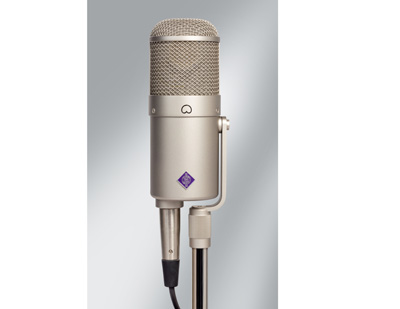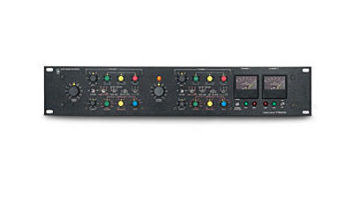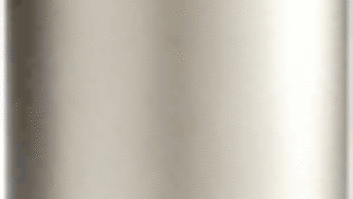
A mic with a reputation is something to be cherished, and remembered. The first thing that comes to the mind of an engineer when you say the numbers 57 isn’t steak sauce, it’s “great snare mic you can rely on.” While both mics reviewed here are Take 2s, the manufacturers approached the reissues from a different standpoint.
The U 47 fet Collectors Edition from Neumann is an elegant and faithful representation of the original with just the HPF position being changed. But the AKG D12 VR is something completely different. The reissue is loosely modeled after the AKG D12 E, which is also a large-diaphragm, dynamic mic with a bass chamber for enhanced low end. The VR updates the E by adding phantom-powered filter/EQ options, a more svelte design, and integrated stand mount. I used both mics in tandem and separately on a variety of sources, from bass amp to guitar cab to vocal and more. I was rarely disappointed.
U 47 fet Collectors Edition
The U 47 fet was produced by Neumann between 1972 and 1986, and the look of the Collectors Edition is exactly the same, right down to the integrated swivel arm, SPL handling (137dB no pads), and switch positions. It’s a beautifully done rendition that comes in the company’s signature wooden box with gold hinges and clasp. What’s different? The reissue is fixed cardioid (the original is super-cardioid), and the rolloff has been moved down from 200 Hz to 140 Hz—a more usable spot.
I know the U 47 fet as a great kick drum mic, so that’s where I started. The double pad is what makes this condenser an instant hit for high-transient material. The -10dB switch on the back of the mic is placed before the internal electronics, while the -6dB pad at the bottom of the mic is right before the XLR output. This makes it a lot harder to overload the mic, or the preamp, although too much SPL will push the diaphragm too hard and no amount of padding will make that sound better.
I placed the U 47 fet with both pads engaged 4 inches from the edge of the shell, 4 inches back from the head, the same distance from the inner head where I placed a classic AKG D112 companion mic. Inside the drum, the D112 offered a great rendition of the attack of the beater, and with a little help around 50 Hz was nearly enough. But when I added the U 47 fet, it completed the picture, offering a resounding transient kick hit; with 4 dB added at 60 Hz using a Neve 31102 EQ, the bottom end rocked the room.
Later, in another session, I wanted to see whether the U 47 could take the SPL inside the drum, paired with a vintage RCA 44 on the outside. Even with both pads engaged, the SPL inside the drum was too much for the condenser and I opted to move it just outside the hole, more even with the 44. This was another great pairing that needed less EQ help than the D112/U 47 combo. The 44, being a ribbon, is a great choice for the outside because it naturally ignores any cymbal bleed from above and provides plenty of bottom end. The U 47 was at its best just outside the hole. Again, a great rendition of the transient hit, which I enhanced by adding a few dB at 5 kHz to bring out the attack of the beater.
Next I recorded a female lead vocal using the mic with all switch options off. It sounded great. The vocalist had a slight edge to her voice, but even the U 47 fet’s slight bump at 2 kHz didn’t make it unnaturally present. With an LA2A offering -5 dB of gain reduction at the peaks, it sat perfectly in the track and later worked great in the mix with minimal EQ. Critical placement of the mic and a good pop filter are needed, as Ps and Ts can get out of hand. But that’s the same with any mic.
I tried it next on an Ampeg B15 amp cabinet, which sounded great, as well as on a Fender Tweed guitar cabinet, which was my least favorite application. It lacked the bite and personality of my usual Royer 121/ 421 or 121/ 57 combo, which is usually all you need for that situation.
I used the U 47 fet over a set of orchestra bells with a Royer 121 and it was a fantastic pairing. Bells have many overtones and an incredibly sharp attack, so condensers can often be too “real” by making bells too cutting. With the Royer 121/U 47 fet set at 60 percent/40 percent in the mix, the pair offered the rounded top and transients of the ribbon with the extended top end of the condenser—just right.
Apart from the sticker shock ($3,999), the U 47 FET ticked all my checkboxes and satisfied my expectations. It is a beautifully done reissue that looks great and sounds better. If you’ve got the $$$, it’s an instant nouveau-classic that will be sure to retain its value over time.
AKG D12 VR
The AKG D12 VR is a large-diaphragm dynamic mic with an optional phantom-powered three-position filter/EQ section. There are sizable differences between the D12 E, which the D12 VR is modeled after, and the VR. The E could only take 128dB SPL, while the VR takes 164 dB. The E is clunky in size, while the VR is square-shaped but works well on a mount (this is in large part due to the side-by-side arrangement of the XLR connector and mic mount); the E calls for a separate butterfly mount and the XLR tends to stick way out. So while you could say that this is a reissue, it’s a stretch.
The active electronics are optional: Without phantom power the mic operates as a true dynamic, although once you play with the EQ, you’re always going to use it. I always start a review with the eyes and ears of a skeptic—something as traditional and yet as forward thinking as the D12 VR has to prove itself, and it did. First, the mic looks great. It’s sturdy, the integral mount works very well, and the three-position switch is easy to get your head around. The LED largely acts as a confidence light assuring that you have phantom power active. I love that feature because in the heat of battle it can save much troubleshooting time.

AKG D12 VR large-diaphragm dynamic microphone
I tried the mic the very first time without, then with, the active electronics in place and there’s no contest. It’s a good mic without it, and a great mic with it. The low-end boost/mid cut (position 1), midrange cut only (position 2), and Low boost, midrange cut, high boost (position 3) settings are just enough and not over the top. You can see there was some thought (and ears) put into designing the curves as they are pretty much what you have to do to shape the perfect kick drum sound. Once I tried all the settings separately on different sessions, I ended up using position 3 about 90-percent of the time. Validation is always great, and using the mic on Nashville drummer Nir Z’s kick and having him say, “You know I’m picky, and I love this mic,” was nice to hear, especially after falling in love with it myself.
On Nir’s kit, I used the U 47 fet reissue reviewed here on the outside, and the D12 VR with the EQ set in position 3 just outside the hole of the front head. When something works with just a fader move, without EQ, you know you have a winner. That was the case this time. Blending the fet and D12 VR provided a great sound right out of the box. I also found that the VR by itself was a formidable single-mic option on a kick.
On another session I used the mic on a low tom in position 1, then again on an Ampeg B15 cabinet, also in position 1. They both rocked. The punch line, if you needed one, is that this mic is only $499, which jacks up the wow factor tenfold. This is great because if you ever want to try it on something else, you’re going to have to buy two. Loved it.
Kevin Becka is Mix’s technical editor.
Product Summary
COMPANY: Neumann
PRODUCT: U 47 fet Collectors Edition
WEBSITE: www.neumannusa.com
PRICE: $3,999
PROS: Great-sounding mic; excellent for kick, bass, acoustic guitar and more.
CONS: Price out of reach for some.
Product Summary
COMPANY: AKG
PRODUCT: D12 VR
WEBSITE:www.akg.com
PRICE: $499
PROS: Phantom-powered. Onboard EQ is excellent. Sounds great.
CONS: You may need two.



